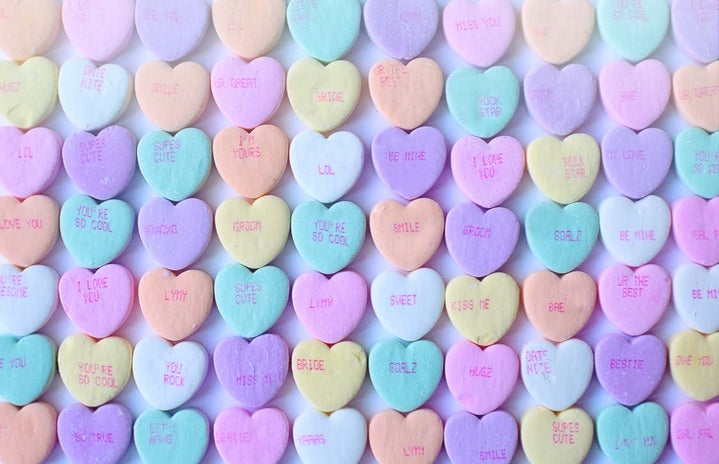Fashion is a language that can be understood around the world. We all have to wear clothes; why not wear clothes that express who we are? As social media apps such as TikTok and Instagram grow, people have started to become more experimental with their self-expression through clothing. One of the ways people have been experimenting with clothes is by trying out different subcultures from around the world. One of the most popular sources of fashion inspiration is Harajuku, Japan!
Harajuku is a district in Japan that is known for being young and vibrant and is home to many shops selling items that are fun and funky. The reason it became so popular for fashion is that a large part of the shopping district would close car traffic on Sundays from the late 70s to the late 90s, allowing people to come together to get away from their rigid work lives. These people would come together and create subcultures of fashion, like the ones we are talking about today. These exciting fashions have started making their way over to America, where many alternative-dressing people are starting to try out these styles for themselves. Come with me as we check out some of these Japanese fashion subcultures to see just how fun clothes can be!
Lolita Fashion
If you’re someone who is interested in literature, you might be a bit concerned about the name of this subculture. Don’t worry; this fashion has nothing to do with the book or movie Lolita. In fact, many people believe that the word “Lolita” was chosen simply because it sounded cute to Japanese speakers. Lolita fashion draws inspiration from Rococo era and Victorian era fashions, which is why it looks so princessy and elegant. The fashion was made as a way for women to rebel against the idea that once they reached a certain age, they were no longer “worthy.” This fashion was popular during the 70s, 80s, and 90s, with brands such as Pink House, Milk, and Angelic Pretty being the most popular choices for Lolita fashion. According to the Japanese Fashion Wiki, a typical Lolita outfit, which is referred to as a coordinate or coord, usually has these items as part of the outfit:
- A petticoat, which is an underskirt used to create the curved bell silhouette,
- A main piece, which can be an OP (one-piece dress), a JSK (a jumperskirt, or an overall dress), or just a skirt on its own
- A blouse meant to be worn under the JSK or with a skirt, not necessarily worn with an OP
- Headwear, which can include bows, headbands, hats, or animal ears
- Bloomers, which are flowy pants usually used for modesty under skirts and dresses
- Legwear such as tights or socks
- Shoes such as Mary Janes
While these rules are not necessarily needed for a coord, most Lolitas do follow this general coord structure. A Lolita coord also follows some kind of color scheme or theme, which can allow for even more customization of a coord. There are many different styles of Lolita, but the most popular are Sweet Lolita, Gothic Lolita, and Classic Lolita. Sweet Lolita focuses on child-like motifs such as candy and desserts, soft animals, fantasy creatures like unicorns, and sometimes even childhood cartoons and books. Gothic Lolita takes inspiration from gothic themes such as bats, skulls, coffins, and chandeliers. Classic Lolita goes back to Rococo and Victorian roots and focuses on more classical and historical inspiration such as crowns, crests, antique items, and old paintings. There are so many different ways to style Lolita fashion, which is why it has become such a popular subculture for people who enjoy sweeter, softer, and more “traditionally feminine” themes.
Decora Kei
If you’re someone who likes to wear stickers and pins and lots of accessories with your outfits, then you might be interested in Decora Kei. Decora Kei, or just Decora, is a fashion subculture that focuses on, well, decorations! Decora hit its peak in the mid-2000s and became associated with the Harajuku district. Unlike Lolita fashion, Decora draws inspiration from more modern fashions and pop culture from the ’80s and ’90s. Decora doesn’t have as strict rules as Lolita fashion does and is very casual in comparison. However, both fashions draw from childlike themes and motifs in order to provide an escape from the burden of growing up. Some of the most popular Decora brands include 6% DOKIDOKI, ACDC RAG, and Tokidoki. According to the Japanese Fashion Wiki, decora fashion typically includes:
- Bright color schemes
- 80s and 90s cartoon motifs such as “Strawberry Shortcake, Hello Kitty, Care Bears, Pokemon, and The Smurfs”
- T-shirts and hoodies
- Tutus and other tulle skirts
- Leg warmers and/or arm warmers
- Knee-high socks
- Sneakers or Mary Jane shoes
- Accessories such as masks, band-aids, ribbons, bracelets, necklaces, and hair clips
Some substyles of Decora fashion include Casual Decora, Dark Decora, and Decora Lolita. Casual Decora refers to an outfit that is still very accessorized but not to the same extreme as many Decora outfits. These outfits are a more relaxed take on the bright and colorful subculture, which may be more friendly for people who may have sensory issues that don’t allow them to wear all the accessories that a regular Decora outfit might have. Dark Decora takes Decora style and uses dark colors instead of bright colors. These outfits are still extremely decorated; they just aren’t as neon as other Decora outfits. Decora Lolita combines the themes and styles of Lolita fashion with the extreme accessorizing of Decora fashion. These outfits exaggerate some of the original ideas of Lolita fashion, like bows, candy, and toys, while still maintaining the softness of the Lolita style. Decora fashion is definitely not for everyone, but it may inspire you to try accessorizing more in your outfits. Who knows? You might just like it.
Fairy Kei
While Decora focuses more on bright neon colors, general cartoon motifs, and lots of accessories, Fairy Kei focuses more on pastel colors and generally “feminine” motifs. Fairy Kei was most popular in the 90s and early 2000s, with some second-hand stores even being created specifically to cater to this style. Fairy Kei is inspired by 80s styles as well and doesn’t feature many rules as to what makes a Fairy Kei outfit. People who wear Fairy Kei try to give off a nostalgic vibe with peaceful colors and cartoon motifs. Popular Fairy Kei brands include Spank!, Fancy Surprise, and Hanamizz, as well as lots of thrifting and DIY. According to the Japanese Fashion Wiki, a typical Fairy Kei outfit features:
- Pastel colors, typically in shades of pink, blue, lavender, mint, and yellow
- “Girly” 80s cartoon motifs such as My Little Pony, Care Bears, Rainbow Brite, and Barbie
- Loose clothing such as oversized sweaters, t-shirts, and tulle skirts
- Pastel tights, legwarmers, and socks
- Lots of patterns, such as moons, candy, polka-dots, unicorns, and other cutesy images
Fairy Kei does not have any real substyles within it, but there is a style very similar to Fairy Kei known as Pop Kei. Both styles feature ’80s cartoon motifs and colorful outfits with lots of accessories, but Pop Kei plays around with bright and pastel colors. In fact, it is said that the name Pop Kei came from the fact that the colors “pop” in their outfits. Spank!, which was mentioned earlier, actually defines its style as more aligned with Pop Kei than Fairy Kei. Pop Kei kind of seems like a good middle road between Fairy Kei and Decora for someone who wants the brightness of Decora but the “girly” nostalgia of Fairy Kei.
This article doesn’t even scratch the surface of the amazing history of Japanese fashion subcultures, and there are still so many subcultures and substyles within those subcultures that can be explored and played with. If you like darker themes and edgier fashion, you may want to check out Visual Kei or Dark Girly. If you like cottagecore styles, you may like Natural Lolita, which is considered one of the original Lolita styles. All that being said, it’s okay if your personal fashion doesn’t fall into any set subculture or aesthetic. Fashion is all about expressing yourself the way you want to and finding what makes you unique. These subcultures are just communities for people who have similar styles and want to find people like them!


